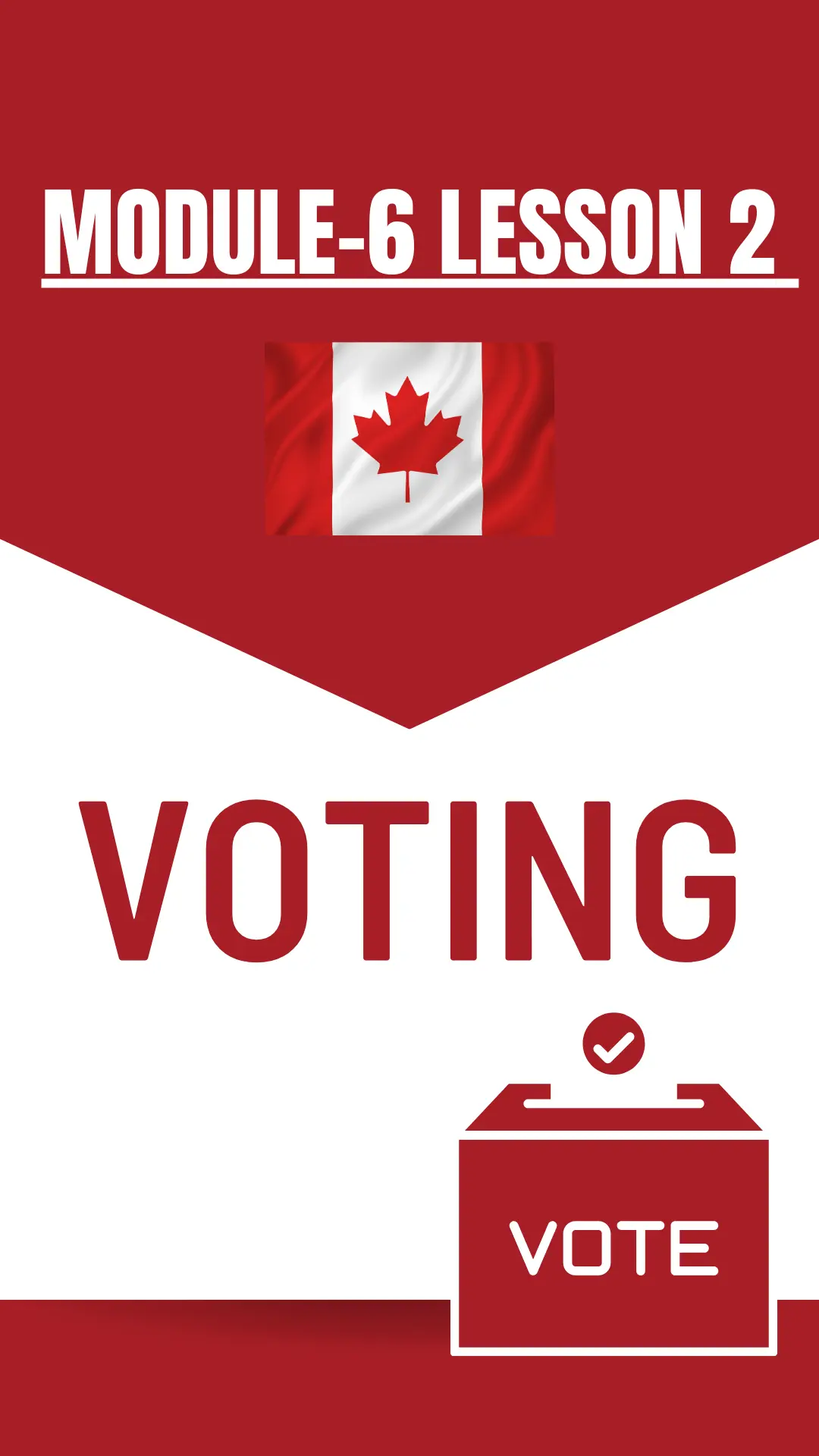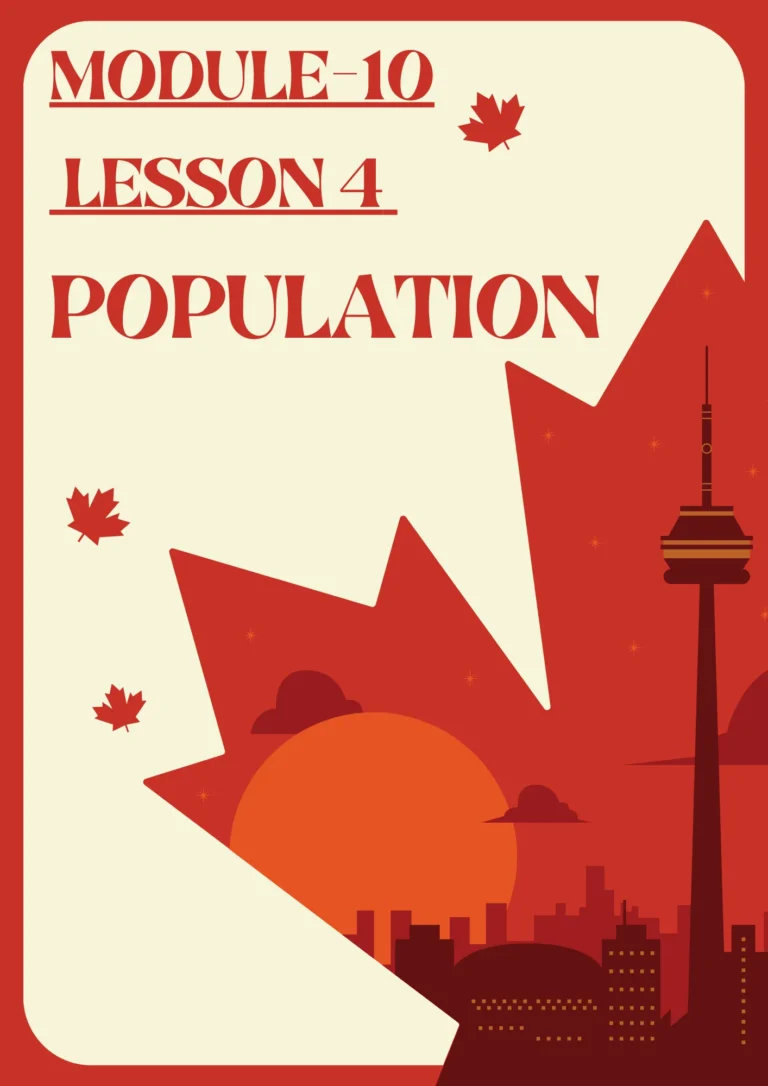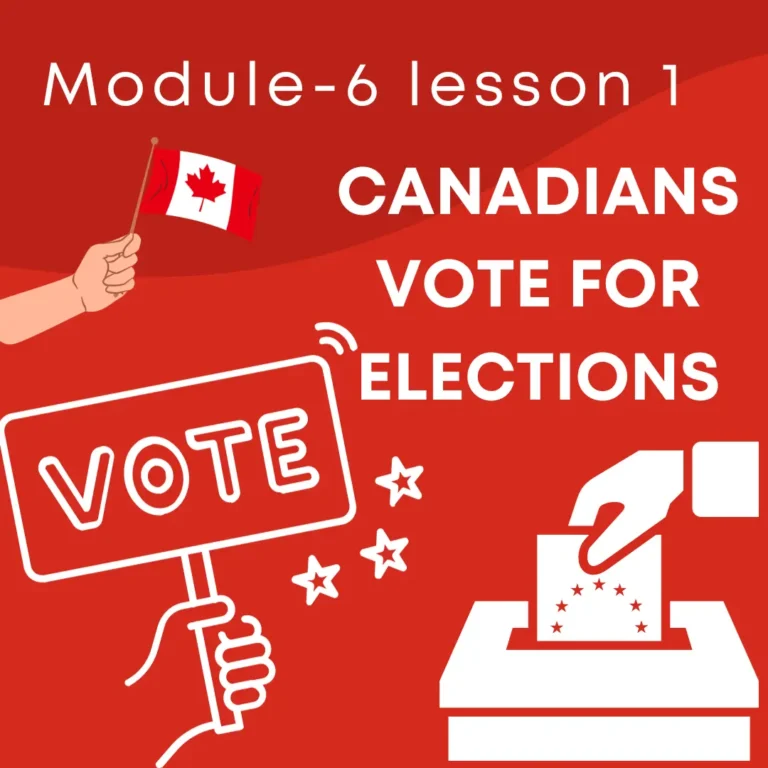Module-6 lesson 2 Voting
The cornerstone of democratic participation and citizen empowerment is voting. Canada is a country with a long democratic history. The act of voting becomes more than just an individual decision; it’s a way to express a group sentiment that can shape the future of a nation. The multifaceted dynamic of voting in Canada is explored through this essay, which explores the historical context of the country, the electoral process, and the wider implications of citizens’ participation.
History of Voting Rights
The journey of Canada towards universal suffrage was marked by the gradual expansion in voting rights. In the past, voting rights were limited and mainly available to men who owned property. Through successive social and political waves, the voting rights of women, Indigenous Peoples and other marginalized group have expanded. Canada’s evolution in voting rights reflects its commitment to inclusion and to improving the representation of democracy.
The Democratic Machinery
Canadian elections are based on principles of parliamentary government and representative democracy. Federal elections are held every four years and give citizens the chance to elect MPs to the House of Commons. Federally, the First Past the Post system determines the winning candidate in each district. This emphasizes the importance of local representation.
The Canadian electoral system is based on a democratic framework. However, there are regional differences in the voting systems and systems. Decentralization allows citizens to participate in democratic processes at different levels of government.
Voting is a democratic act.
The voting process in Canada is simple, yet rich with meaning. It embodies the values of inclusivity and accessibility. Citizens who are 18 or older and eligible have the right vote. Voting takes place in designated polling booths strategically placed across the nation, which ensures that citizens are able to exercise their democratic rights conveniently.
Canada encourages citizens to vote in person on Election Day, but also offers advance voting, special ballots and mail-in votes for those living abroad. The measures are designed to be inclusive and promote participation. They also reinforce the democratic ideal that everyone’s voice is important.
Political Pluralism:
Canada is known for its multi-party political system. Political parties are a major influence on public policy and discourse. Major political parties such as Liberals and Conservatives present different ideologies and policy platforms.
Each election presents voters with an array of options, all representing different visions of the country. In the electoral process, the interplay of parties and citizens is reflected in the voting. The ballot then becomes an instrument for individuals to contribute to the dialogue on Canada’s future.
Important of informed voting:
The effectiveness of Canada’s democratic process depends on informed voting. Access to accurate information on candidates, parties, and key issues is crucial to the electorate making informed decisions. The media, both traditional and online, play a vital role in disseminating and spreading information. They also foster political literacy and facilitate an informed and engaged citizenry.
Civic education, debates on politics, and efforts to engage the community all contribute to raising political awareness in Canadians. Voters who are well-informed enhance the legitimacy of democracy, as they ensure that the decisions taken at the polls reflect the interests and goals of citizens.
What is the impact of voter turnout?
The level of voter turnout reflects the overall health and stability of a democratic system. A high voter turnout indicates an active and engaged citizenry that reinforces the legitimacy of government and elected officials. Low turnout can indicate disengagement or dissatisfaction.
Canada’s varying voter participation levels in various elections have prompted ongoing discussion about ways to increase the level of engagement. Initiatives such as outreach campaigns aimed at underrepresented groups and voting reforms are among the ways to tackle this problem.

Conclusion:
Voting in Canada is more than a civic obligation; it’s a transformative and dynamic act that helps shape the political landscape of Canada. Together, historical voting evolution, democratic machinery, pluralism in politics, informed voting and voter turnout contribute to the vibrant, resilient democracy system. Canadians who exercise their voting rights actively contribute to defining the future and present of Canada, strengthening the democratic tradition of Canada.




